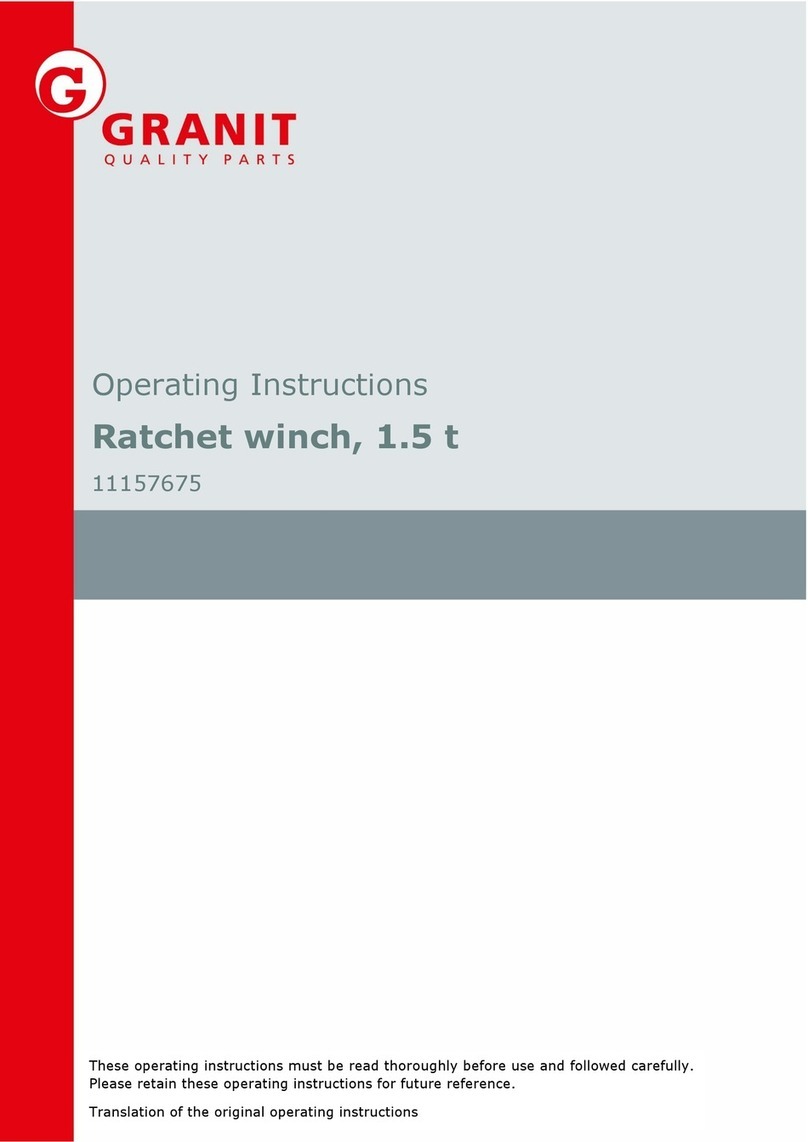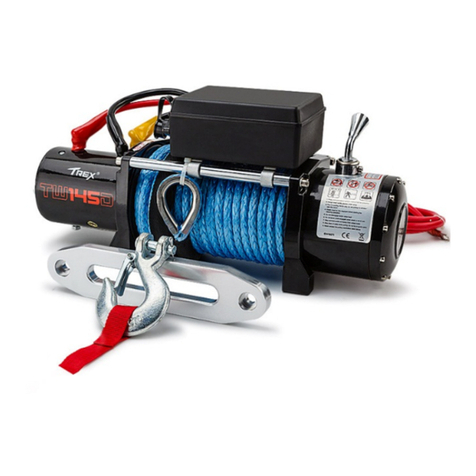
WHW420
V. 01 –11/04/2014 8 ©Velleman nv
Pawl Positions
The pawl has three positions:
reeling in: turn the handle clockwise to reel in the line.
free spooling: turn the handle in any direction to reel in or out.
reeling out: turn the handle counter-clockwise to reel out the line.
Warning! If a load is attached to the line, keep a firm grip on the handle
when switching the pawl position or when using free spooling.
6. Installation
Read the entire safety instructions at the beginning of this manual
before installing the device.
1. Choose a suitable mounting location. Take care of the following points:
oThe mounting structure and hardware must be able to support the
winch and the load without damage or weakening. If necessary, use
steel reinforcement plates or additional bracing.
oMake sure that the handle [5] can rotate freely by 360°.
2. Place the winch on the mounting surface [6] and mark the location of
the mounting holes.
3. Before drilling, verify that there are no hidden parts or structural pieces
in the mounting area that can be damaged.
4. Drill the holes at the marked locations.
5. Use three 3/8" (M10) bolts, washers, and lock nuts (not incl.) to fix the
winch frame [1] on the mounting surface [6].
7. Installing the Winch Line
Make sure that the line is strong enough to move the load. Obtain
the line manufacturer's recommendations for suitable line sizes
and types. Use an appropriate end connection to attach the hook
to the line. (Cable, rope, hook, and hardware for attaching are not
included.) Always follow the line manufacturer's safety and
operation instructions.
You can use the winch either with a rope or with a steel cable (wire rope).
The attachment method differs depending on the type of line.
7.1 Rope
Attaching a rope to the winch drum requires no bolts, nuts, or rope clamp.
1. Place the pawl [2] in the free-spooling position [b] so that it is
disengaged from the gear and the drum can rotate freely.
2. Guide the rope end under the hub of the drum [4].




























